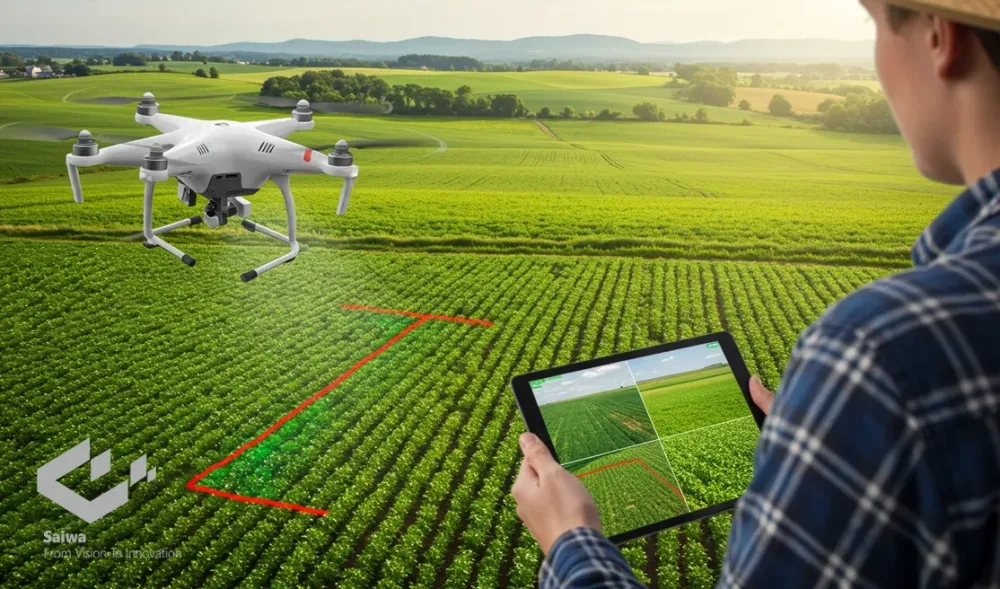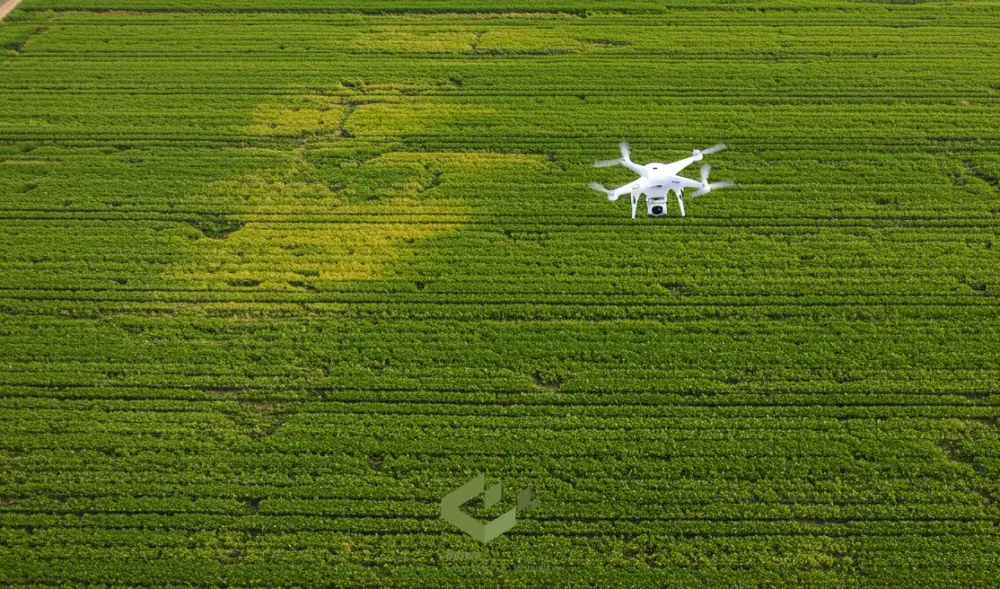Drone Crop Scouting: Transforming Modern Agriculture with Smart Insights
In modern agriculture, technology is reshaping how farmers monitor and
manage their crops. Among the most transformative tools available today is drone crop scouting,
an innovative approach that combines aerial imaging, sensors, and data
analytics to revolutionize field monitoring. This technique empowers farmers to
detect issues early, make informed decisions, and increase productivity, all
while reducing costs and environmental impact.
What Is Drone Crop Scouting?
Drone crop scouting is the practice of using unmanned aerial vehicles (UAVs)
to survey agricultural fields. Equipped with high-resolution cameras and
advanced sensors, drones capture detailed imagery that reveals valuable
information about crop health, soil conditions, and growth patterns. This
aerial perspective allows farmers to see their fields from above, identifying
problems that might otherwise go unnoticed from ground level.
Traditional crop scouting methods often require extensive manual labor
and time, limiting the frequency and accuracy of observations. Drone crop
scouting overcomes these challenges by providing rapid, consistent, and
detailed coverage across vast areas of farmland. The resulting data helps
farmers monitor changes over time and make precise, data-driven interventions.
The Benefits of Drone Crop Scouting
Drone crop scouting offers several significant advantages that make it an
indispensable tool in modern agriculture.
1. Early Problem Detection
Early detection is crucial in preventing minor issues from becoming major
threats. Through drone crop scouting, farmers can identify signs of pest
infestation, water stress, or nutrient deficiency before visible symptoms
appear. High-resolution images and multispectral data highlight subtle
differences in vegetation health, enabling timely and targeted treatment.
2. Time and Labor Efficiency
One of the greatest benefits of drone crop scouting is efficiency.
Instead of walking through fields to manually inspect crops, farmers can deploy
drones that cover hundreds of acres in minutes. This saves both time and labor,
allowing farm managers to focus their energy on decision-making rather than
data collection.
3. Cost Reduction and Resource Optimization
Drone crop scouting helps farmers optimize resource use. By pinpointing
specific areas that require attention, farmers can apply fertilizers,
pesticides, or irrigation only where necessary. This precision reduces input
costs and minimizes environmental impact while maintaining or even improving
yield quality.
4. Enhanced Data Accuracy
Unlike manual scouting, which is subjective and limited in scope, drone
crop scouting delivers objective and repeatable results. The aerial data can be
analyzed through specialized software that produces detailed maps, such as NDVI
(Normalized Difference Vegetation Index) maps, which reveal differences in crop
vigor and stress. This enables accurate comparisons between growth stages and
across seasons.
5. Support for Precision Agriculture
Drone crop scouting is a cornerstone of precision agriculture, a farming practice that uses data to manage field variability. By integrating drone-derived insights with other technologies such as soil sensors and weather data, farmers can make smarter, site-specific decisions. This approach enhances efficiency, sustainability, and profitability.
How Drone Crop Scouting Works
The process of drone crop scouting typically follows a series of
coordinated steps to ensure reliable and actionable data collection.
- Flight Planning: The first step involves mapping
out the field and setting the drone’s flight path. Automated flight
planning ensures consistent coverage and data quality.
- Data Collection: The drone flies over the fields,
capturing high-resolution RGB, thermal, or multispectral images. These
sensors detect variations in plant health, moisture levels, and
temperature.
- Image Processing: Once the drone returns, the
captured images are stitched together to create detailed maps. Specialized
algorithms analyze these maps to assess plant health and detect
abnormalities.
- Analysis and Reporting: Farmers review the processed
data to identify problem areas, track crop growth, and determine the best
interventions for each section of the field.
Through this workflow, drone crop scouting transforms raw imagery into
actionable intelligence that helps farmers make informed and timely decisions.
The Role of Artificial Intelligence in
Drone Crop Scouting
AI technology amplifies the capabilities of drone crop scouting. Machine
learning models can analyze aerial images to detect patterns, predict potential
issues, and classify crop health automatically. This automation reduces human
error and saves valuable time in data interpretation.
AI-powered analysis also allows continuous improvement. As drones collect
more data, algorithms learn from previous patterns, becoming more accurate in
diagnosing issues and recommending solutions. This integration of AI with drone
crop scouting ensures that farming becomes smarter, faster, and more precise
over time.
Real-World Applications of Drone Crop
Scouting
Drone crop scouting can be applied across a wide range of agricultural
scenarios:
- Pest and Disease Detection: Drones can identify areas
affected by pests or diseases before they spread, enabling localized
treatment.
- Irrigation Management: By analyzing moisture levels,
farmers can adjust irrigation schedules and avoid over- or under-watering.
- Nutrient Monitoring: Multispectral imaging highlights
nitrogen and chlorophyll levels, helping optimize fertilizer application.
- Yield Estimation: Drones can assess plant density
and biomass to predict harvest outcomes more accurately.
- Replanting and Field Mapping: After adverse weather events,
drone crop scouting helps determine which areas need replanting or
restoration.
Each of these applications contributes to greater farm efficiency,
reduced environmental impact, and improved crop performance.
Integrating Drone Crop Scouting with
Smart Farm Platforms
Modern solutions for crop yield estimation are rapidly evolving, and
AI-driven platforms are at the forefront of this transformation. Advanced
systems like those developed at saiwa use
artificial intelligence, drone data, and machine learning algorithms to provide
farmers with real-time insights into crop health and productivity. By
integrating data from sensors, imagery, and environmental conditions, such
platforms enable precise yield forecasting, better resource management, and
more sustainable farming practices.
The Future of Drone Crop Scouting
The future of drone crop scouting is bright. As technology advances,
drones will become even more autonomous, affordable, and capable.
Next-generation drones will use real-time data processing, allowing instant
analysis without the need for manual uploads. Integration with predictive
analytics will help farmers anticipate issues such as disease outbreaks or
yield fluctuations before they occur.
Additionally, improvements in battery life, camera resolution, and AI
algorithms will make drone crop scouting even more reliable and accessible for
farmers of all scales. The continued evolution of this technology promises not
only greater efficiency but also a fundamental shift toward data-driven and
environmentally responsible agriculture.
Conclusion
Drone crop scouting has become an essential tool for modern farming,
providing unmatched visibility into field conditions and enabling smarter,
faster decisions. By combining aerial imaging, AI, and data analytics, it helps
farmers detect problems early, optimize resources, and improve yields
sustainably.
In an era where every drop of water and every grain of fertilizer
matters, drone crop scouting represents the future of efficient and sustainable
agriculture. It empowers farmers to make informed choices, maximize output, and
protect their land for generations to come.






Comments
Post a Comment